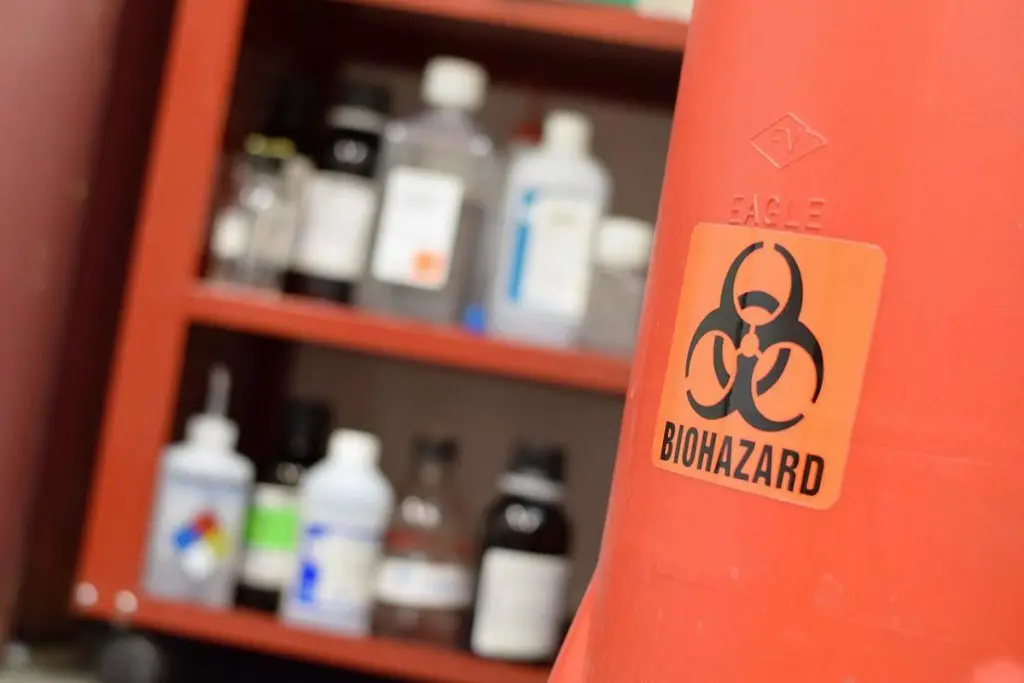Disinfection is an essential process in the process of preventing and controlling microbial contamination found in the water, on various surfaces, in personal products, drugs, closed spaces, and more. Pathogens can be inactivated or destroyed by either chemical or physical methods.
Chemical disinfectants
Chemical disinfectants are chemical substances used to destroy harmful microbes. Health care facilities, manufacturing companies, food and beverage industries all use chemical disinfectants to eliminate microbial contamination. Chemical disinfectants are classified into alcohols, aldehydes, chlorine compounds, iodine compounds, phenolics, Quaternary Ammonium Compounds (QAC), oxidizing agents and other agents (like ethylene oxide ).
Different chemicals will have different efficacy and safety concerns. For example, alcohols (i.e. 60 to 80% ethyl alcohol) are effective against bacteria and enveloped viruses, but they are not effective against bacterial spores and non-enveloped viruses. The biggest safety concern around alcohol is the fact that are flammable liquids that can be easily ignited when used near a flame, or spark- especially when used in spray form, as mist.
Aldehydes like formaldehyde and chlorine-based products like chlorine dioxide have broad-spectrum activity against bacteria, fungi, viruses, and even bacterial spores. Regarding safety issues, it should be noted that some aldehydes are highly flammable, forming explosive mixtures with air. Chlorine is a toxic gas, and this compound is quickly released from bleaching solutions. Chlorine-based products are dangerous when mixed with acids found in other cleaning products. Workers who are exposed to high concentrations of chlorine can have severe adverse reactions, including death.

Oxidizing compounds, especially the strong oxidizers generate toxic products upon reacting with other chemicals. In terms of safety issues, spilling a high concentration of peroxide solutions on flammable substances can easily cause an immediate fire.
Ethylene oxide is widely used as a chemical broad-spectrum disinfectant, but it is a highly flammable chemical. It is also toxic, mutagenic, and carcinogenic.
Physical disinfectants
Physical agents provide disinfection that does not involve the addition of chemicals but instead use methods like UV irradiation, sonic or hydrodynamic pressure, and radiation. Physical disinfectants work by disrupting the function of the microorganisms or cause them structural damage through physical methods.
Let’s focus on disinfection with UV light. The most effective UV light for disinfection purposes is the wave range that is the most efficiently absorbed by the nucleic acids and is in the UVC spectrum: between 200 to 280 nm range.
Disinfection with UV light involves the use of an ultraviolet disinfection unit. The efficacy of UV light had been tested in many scientific studies. When it comes to water disinfection, for example, researchers found that bacteria and protozoa cysts like Giardia and Cryptosporidium are more sensitive to UV, while viruses and bacterial spores seem to be more resistant to UV. Ascaris suum and adenoviruses typically require a higher dose of UV light for disinfection. The findings are very positive, and researchers agree that UVC light is highly effective against a variety of Gram-positive and Gram-negative bacteria, viruses, protozoa, and fungi.
Unlike chemical disinfectants, using an ultraviolet disinfection unit will not create disinfection by-products, chemical residue, or corrosive agents. This method is eco-friendly, making it a great choice for those who want to reduce chemical pollution. Disinfection with UV light is fast-acting, as microbial eradication is seen within seconds and minutes. Unlike chemical disinfectants, UV treatment is unaffected by temperature, pH, or presence of reactive organic compounds. UV lamps are not flammable or consider a fire hazard when used properly.
When it comes to safety for humans, the rules are very clear: people should avoid any exposure to UVC light. Disinfection with UV light (UVC light) is always used on surfaces, and in spaces where there are no people allowed.

Interested to purchase an innovative, upgraded ultraviolet disinfection unit? Consider PXL Sanitizer.
The PXL Sanitizer uses enhanced UV light to disinfect surfaces from bacteria and viruses. Testing by a third-party certified analytical microbiology laboratory found that the PXL Sanitizer can virtually eliminate bacteria with antibiotic resistance. On a surface with 65 million bacterium cells with antibiotic resistance, less then 1000 cells remained after 30 seconds of illumination with the PXL Sanitizer. After 5 minutes of illumination, only 6 cells remained.
https://www.labour.gov.hk/eng/public/os/C/Disinfectants.pdf
http://www.waterpathogens.org/book/physical-disinfectants
Tzachi Sabati
CEO, IZAK Scientific
Physicist specializing in photonics and quantum technologies, with deep expertise in quantum sensors and advanced optical systems. Leads the Advanced Quantum Lab course at the Technion, bridging academic excellence with industry innovation. At IZAK Scientific, provides cutting-edge photonics-based solutions, developing customized inspection and sensing systems for R&D and production. Passionate about advancing quantum sensing applications and integrating novel technologies to meet industry needs.

